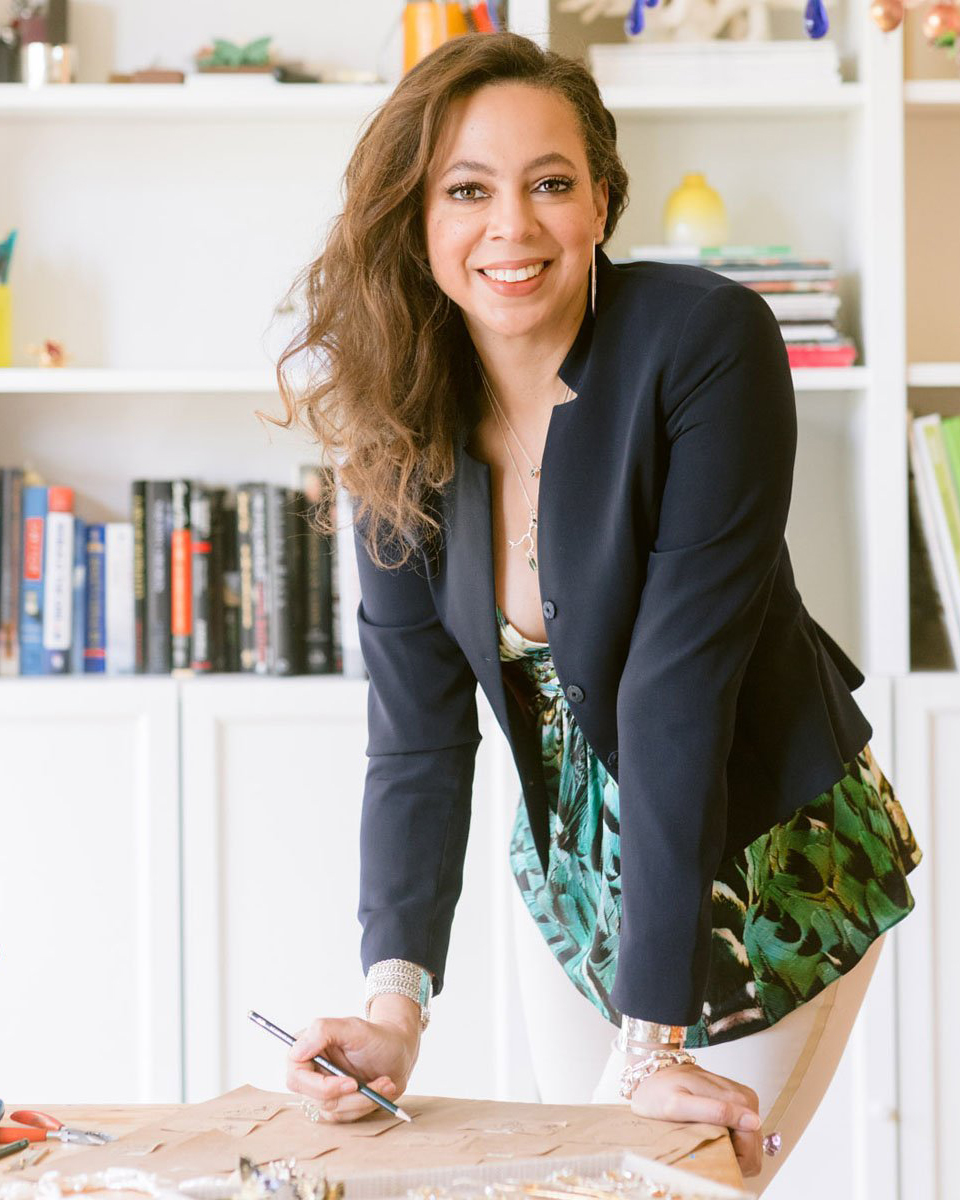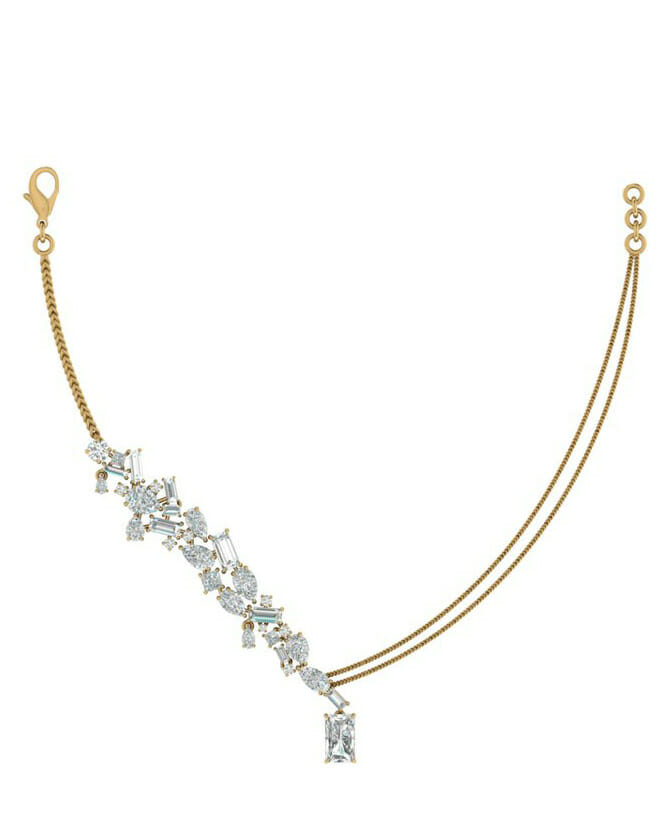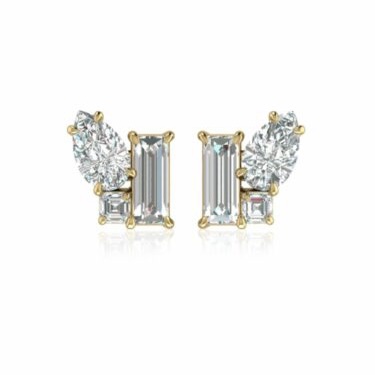Designer Dorian Webb’s Jewelry is Rooted in Architecture and Heritage
Emerging Designers Diamond Initiative participant Dorian Webb wants every piece of jewelry to tell a story.

Architect-turned-jewelry designer and Emerging Designers Diamond Initiative participant Dorian Webb approaches everything she designs with a focus on functionality, elegance and purpose. Raised in New Jersey and based in Oakland, California, Webb graduated from Yale and made a name for herself as an architect before launching her eponymous brand, which honors her African-American heritage through handcrafted fine jewelry, art and home décor.
Webb’s designs have been featured everywhere from The Oprah Winfrey Show to the cover of Essence magazine. Here, as she prepares to expand her collection, the designer discusses with us her creative calling and why working with natural diamonds as part of the EDDI program was just what she needed to take Dorian Webb to the next level.
When did you realize you wanted to work in jewelry?
Dorian Webb: I studied architecture and I spent my junior year abroad in Italy. I wanted to find some way that I would be able to visit Italy six times a year. I purchased some Venetian glass beads there and I brought them back and I made them into jewelry to give to friends. A photographer I hired took them around to galleries in an area that was selling his work, and people just started placing orders.
What interested me originally in designing jewelry was being able to have that real connection to the process of making jewelry, which doesn’t exist in architecture. In architecture, you come up with big plans for things, but you’re not physically making something. There’s something about that creative process for me. For me, what’s really important is connection, and if you have something that’s handcrafted or that’s handmade, that transmits a different quality to people.

How did your background in architecture influence your approach to jewelry design?
DW: Studying architecture makes you think in three dimensions; it makes you more aware of relation and how things come together. It affects your manner of thinking. A lot of Italian clothing designers I like studied architecture. It’s one of those great professions that gives you the foundation and platform to work in other industries. Yale’s undergraduate program is not so much based on whether the roof is going to stand up, it’s more based on the experience that you get going through the space and how people experience it. That’s something that’s transferable and it’s really appropriate to jewelry.
How would you describe the Dorian Webb jewelry aesthetic?
DW: Handcrafting is a big thing with me. If I were to narrow it down, it’s about making women feel great about themselves, but also celebrating African American culture whether it’s obvious or not. I designed a piece that has an unarmed black butterfly with a ribbon that says Black Lives Matter, but also the use of color and polyrhythms. I love the idea that there’s something unexpected about the pieces I design. I also tie it back to my feeling of being on the outside, which is partly due to the fact that I’m an African American woman in this industry.
What is inspiring you and how you create right now?
DW: Nature is always a huge inspiration. Coral is a recurring theme because I love that the shapes are so singular, bold and simple. I also like the fact that they largely remain totally unseen, so I like bringing that to play in jewelry with the whole idea of what is meant to be seen.
What has been some of the highlights of the EDDI program so far?
DW: I’ve had great conversations with my mentor, Monica Rich Kossan. She bought my jewelry before in the past, and it’s great being able to share experiences and get her feedback. I haven’t had that much connection or interaction with other jewelry designers, so to meet five other jewelry designers in the program, it’s incredible. The first conversation we had, we were all so excited because we’re like “There’s other people out there.” It’s funny because we’re trying to tell the world that there are more of us out there and yet we don’t often have any connection between any of us.
I love color and I’m really inspired by color, and I have shied away from diamonds just because of their higher price point. There’s also the layer of just knowing enough about the process to realize there’s another world. The EDDI program is structured so that there was a lot of educational underpinnings to it like learning more about diamonds. Being able to meet mentors, get connected to additional manufacturing sources was great.
There’s something about working with diamonds now that’s like planting the stake in the sand and being like, “With all of this inequality, I’m going to give you quality.”
How did you develop your skill as a jewelry designer?
DW: I was pretty much self-taught, but I took classes all along the way. I studied jewelry when I was in Italy, and I’d taken jewelry classes at colleges like Temple School of Art. I went to a small high school, and they also had a jewelry program there.

What do natural diamonds add to your pieces?
DW: Natural diamonds add a feeling of luxury, of quality, of timelessness. With my pieces, I want people to be able to say that this is something that my great grandmother had and then just be able to put it on and then wear it and still feel amazing in it. I want people to get compliments when they go out and for the pieces to be a point of conversation and connection with other people. The diamond solidifies importance; that this matters and that we matter.
What can you tell us about your diamond collection?
DW: My approach to the collection is about making diamonds modern and wearable for people who are like me. I don’t want something that people only wear when they go out for special occasions. I’m trying to find the line between modern and wearable, but pieces that also have an interesting tactile quality or interesting detailing that you may not expect. Pieces that encourage you to stay in the moment and enjoy the moment.
Shop Dorian’s jewelry on DorianWebb.com and Moda Operandi.
